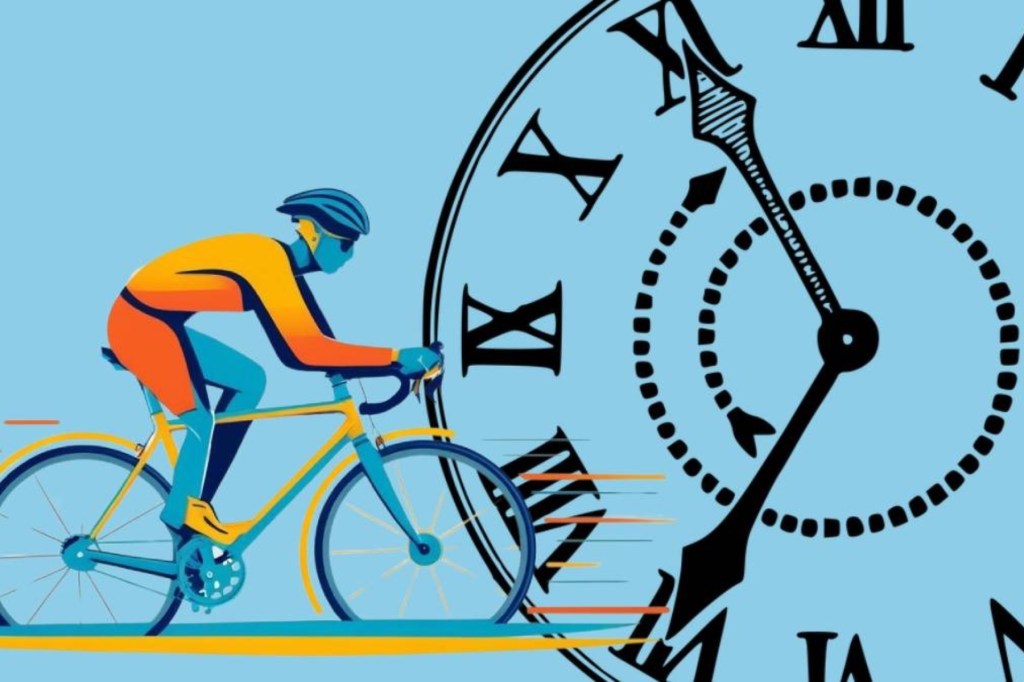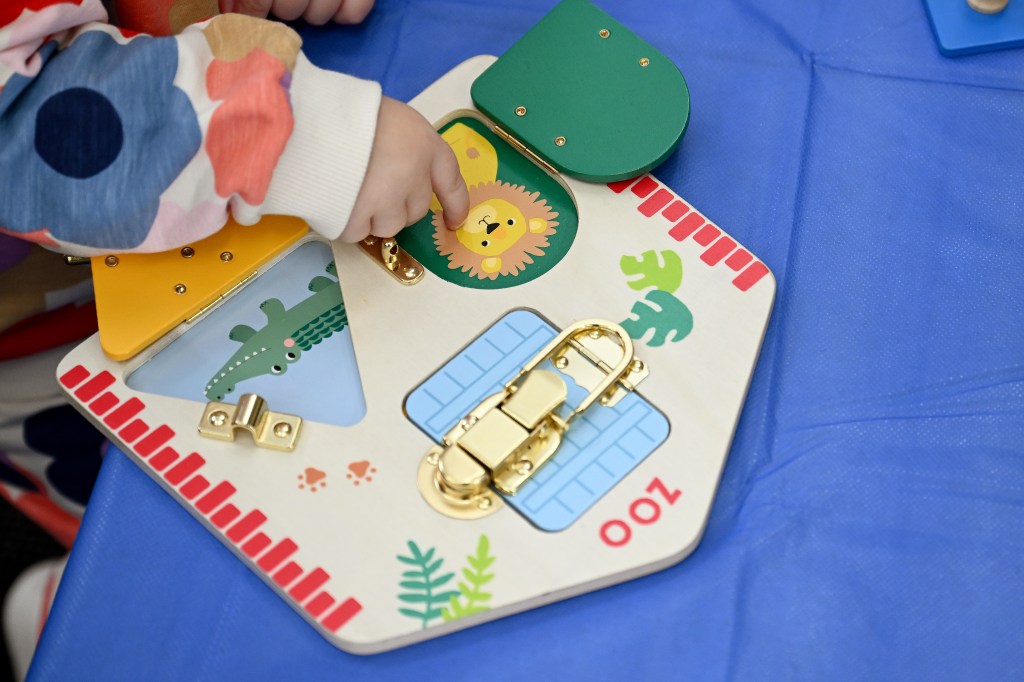The power of NEAT and our two-wheeled time-savers
Our resident Stats Guy sings praises about the ever-helpful, two-wheeled contraptions that give us incidental exercise in droves.

In last week’s column I claimed to have been in a time machine as I spent time on a campground with the demographic setup of the 1960s and travelled on a plane to Noosa where the passengers resembled the aging future of Australia.
I closed the column by stating that while using the metaphorical time machine was fun, I’d rather have an actual time machine.
When I stepped into the garage yesterday to start building a time machine, I was stunned to see an actual working time machine already there. I am talking about the humble bicycle.
You probably own a bicycle too and if your suburb or town is built the right way, your bicycle is nothing other than a miraculous time machine.
Depending on your fitness, the local terrain, the weather and your willingness to sweat, the bicycle often straight up is the fastest way of getting to certain places.
It’s clear that in such instances the bike will be your first choice. In my case, cycling gets me fastest to the gym, the local shops and some of our friends. Rarely would I use another mode of transport to get to those places. But that’s not the true magic of cycling.
Before I explain the real time machine magic of your bicycle, we must talk about the importance of NEAT.
That’s short for Non-Exercise Activity Thermogenesis. That’s nothing but a fancy way of speaking about the energy that you burn through incidental exercise that you squeeze into your day.
You walked to the café rather than driving there? NEAT! You cycled to the office rather than taking the train? NEAT! Well, in fairness you might’ve walked to the train station and were at least a little NEAT.
The Australian Institute of Health and Welfare classifies adults aged 18 to 64 as insufficiently physically active if they haven’t completed 150 minutes of moderate to vigorous activity across five or more days a week.
You might like
That means you need to be physically active to a degree that makes you at least huff and puff a little bit for 30 minutes every day. More than 37 per cent of Australians fail to meet this target of physical activity.
Let’s say you, like most of us, live a relatively sedentary lifestyle. You need to find 30 minutes in your day to exercise. If you exercise in a gym, yoga studio, pool, or anywhere other than your home you likely must spend additional time to get to your place of exercise – your 30 minutes of exercise easily take up 50+ minutes of your day.
By simply travelling via bicycle, you get your minimal amount of exercise without having to waste time getting to your place of exercise.
Let’s turn to Google Maps to figure out what I mean.
We will use my old commute (I am working fully remotely now) as an example. I lived in Coburg and commuted to Melbourne’s CBD – 9.5 kilometres as the crow flies. Here are the travel times based on different modes of transport:
Car: 24-45 minutes of driving (at peak hour 45 minutes would’ve been the norm pre-pandemic while a 24-minute drive is only realistic for scary 4am trips to the office…); parking costs of around $24 a day (assuming 230 work days in the office, parking would’ve set me back $5520 a year – a subscription could get the cost down to $459 a month) and petrol isn’t free either of course; no exercise other than maybe a five-minute walk from the car park to the office
Public transport: 55 minutes (if everything goes smoothly and you have to wait 0 minutes at the platform; realistically you add at least 10 minutes); it costs $11 a day or about $2000 for an annual pass; the trip includes some exercise as I walked to and from the train station (around 10 minutes of leisurely walking)
Walking: Google estimates 141 minutes to walk to the office. I ran it a few times with a backpack full of clothes and a laptop in about 75 minutes. Not comfortable but doable. On the way back I took the train. Once a commute is more than a few kilometres, your feet likely aren’t going to be your main mode of transport.
Cycling: The most direct commute along a terrible road took about 41 minutes but I usually invested another five minutes or so to go along a nice bike track. Cycling came at no cost other than about one flat tyre a year.
In my instance, cycling was the fastest mode of transport, and my office tower had wonderful end-of-trip facilities. Showers, towels, secure bike cages, ironing station, and even a clothes dryer for your exercise gear in case you got wet on the way in.
Cycling in was a no-brainer and clearly good for my fitness as I cycled 90 minutes for maybe 230 days a year.
Now I don’t commute anymore. Exclusively working from home or travelling across Australia means I lost 20,700 minutes worth (90 minutes * 230 days) of exercise a year. The result is that I am four to five kilos heavier now.
My weight doesn’t matter much to the fortunes of Australia, but it shows the impact that active transport can have on public health.
Research is clear on the positive impact of public transport on public health. A population that walks and cycles a lot displays much better physical health (and lower medical costs) than a sedentary one.
Stay informed, daily
Adding bike paths, developing walkable neighbourhoods, and encouraging active transport should be a no-brainer. We even have early research (and tonnes of anecdotal evidence) that active transport is good for mental health. Considering our current mental health crisis, that too should be a priority.
Having more people using active modes of transport also tends to improve general traffic flows in a city by taking cars off the road.
Local businesses tend to report increased foot traffic if a neighbourhood starts encouraging active transport. This means that even if you hate cycling you should love cycling infrastructure.
What can your town or suburb do to become more NEAT-friendly?
In planning, mixed-use zoning is one measure to increase walkability. That’s something your local authority tends to have a real impact on.
Make sure footpaths are well maintained so that it’s easy to walk – if you can’t comfortably push a pram along or if a wheelchair user struggles using the footpath, I consider this footpath a failure. While we are at it, make sure that traffic lights are programmed in a way that favours pedestrians.
Bike lanes should be separated from car traffic. We know that this encourages irregular cyclists to jump on the bike more often. Make sure there are plenty of bike racks in your area. City-spanning bike paths are also crucial.
In Australian cities planning these networks can be tricky if the tracks span several local government areas.
Since many people walk or cycle to public transport, measures that increase PT ridership ensure that people are at least a bit more physically active.
For many people, creating a weekly routine that integrates active transport is much easier than forcing themselves to go to the gym or pray that they will go for a vigorous walk after work.
Back to the time machine element of the bicycle. To unlock not just the health benefits of cycling but also the time travel hack you don’t necessarily need to use the bike for trips where it is the fastest mode of transport.
Assuming you want to meet the AIHW guidelines of +150 minutes of exercise per week, you should add 30 minutes on top of your total commuting time.
Let’s make this a bit more concrete with a scenario that could be correct in many capital cities: Driving to work takes you 30 minutes each way and cycling takes you 40 minutes.
Driving only eats up 60 minutes of your day, while cycling takes 80 minutes. If you take the AIHW guidelines into account, you see that your 60-minute car trip also requires you to add 30 minutes of exercise (which likely requires another 10 minutes of commuting or preparation time).
This means your 60-minute commute in a car forces you to expend 90-100+ minutes to get to work and achieve the minimum amount of exercise. Your bicycle commute only takes you 80 minutes while giving you 80 minutes of exercise.
Only a time machine can give 10-20 minutes more time in your day while also ensuring you stay healthier (and arguably live longer) by squeezing 2.7 times as much exercise into your day.
Demographer Simon Kuestenmacher is a co-founder of The Demographics Group. His columns, media commentary and public speaking focus on current socio-demographic trends and how these impact Australia. His podcast, Demographics Decoded, explores the world through the demographic lens. Follow Simon on Twitter (X), Facebook, LinkedIn for daily data insights in short format.




